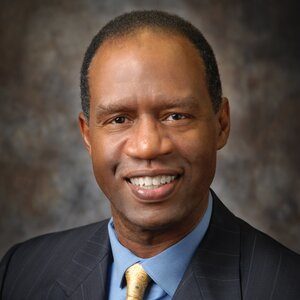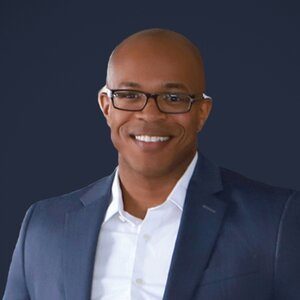
Phil Neuffer,
Senior Editor,
Monitor
When Gordon Scott worked for AT&T Capital in the early 1990s, he was one of only a few African American members in the organization. He was regularly confused with the only other African American male that worked in the small-ticket finance division at that time.
To many, this anecdote might seem like an antiquated relic of a forgotten past, but as has been made so apparent in the last few months following the deaths of George Floyd, Breonna Taylor, Ahmaud Arbery and many others, there has not been as much progress made toward advancing racial equality as some think.
The equipment finance industry is not guiltless in this regard. Although current conversations about the wanton violence of police officers against Black citizens is the most pressing racial issue in the United States right now, the equipment finance industry has played its own role in propagating white privilege.
The Effects of Underrepresentation

Scott, who now works consulting with consumer and commercial automotive lending clients for Experian, spent more than three decades in the equipment finance industry before moving over to automotive lending. Scott found success in equipment finance, but he was unable to ignore the lack of Black representation.
“Throughout my career, the absence of African Americans within the industry was notable,” Scott says.
This lack of representation has persisted, even for those who have reached leadership roles.
“I’ve been involved in equipment finance for almost 30 years,” Thorb Towles, SVP and director of equipment management at BMO Harris Equipment Finance, says. “The one consistent denominator is the fact that I’ve pretty much just been the single Black man, whether in the boardroom or on the call or just leading my team. Period. And it’s something that you become accustomed to… but that doesn’t make it right.”
Charles Hill Jr., HR business partner at DLL, has been in the equipment finance industry for roughly five years and is just as acutely aware of how overwhelmingly white the industry is.
“I would say it was about four years ago that I really just started to hone in on it even more,” Hill says. “It’s one of those things that you are aware of, but over time, you just start to become accustomed to it.”
A lack of representation creates an environment filled with barriers, particularly when it comes to networking and creating lasting bonds.
“I know only a handful, literally less than five, African Americans who are attorneys and are active in ELFA, including me,” Sherry Lowe Johnson, U.S. director and senior counsel for Volvo Financial Services, says. “Similar to other African American professionals, I have been either the only or one of two African American partners in law firms. I believe it is difficult for anyone, whether you’re African American, whether you’re Caucasian, whether you’re female, to gain effective access to relationships in well-established organizations without someone who has existing relationships to introduce and include you; notably, the lack of such exposure is greater for African Americans.”

Even for Black members of the industry who have forged those connections and risen to the heights of leadership, there are still deteriorating effects that may go unnoticed by the industry at large.
“There have been many times when I’ve felt immense pressure,” Nate Gibbons, chief operating officer of Innovation Finance, says, noting that his trajectory has been quite unusual when stacked up against the statistics on Black people. “When you’re the only Black person in the room, or one of only a few Black people in your company, or one of the only Black people representing the industry, you can’t help but sometimes feel the weight of the responsibility to create a positive image of Black people.
“There have been times when I’ve felt misunderstood, when I’ve felt that those around me simply couldn’t relate to me. However, I also realize that I’ve been able to avoid some of the challenges that other Black professionals have faced — a benefit of working under great leadership.”
Hill describes a challenging situation in environments with little to no Black representation. Hill, who considers himself a calm person, finds that he can sometimes be perceived as “not engaged,” in meetings, but if he attempts to assert himself, will sometimes be questioned for his assertiveness. Sometimes he raises his hand in meetings to split the difference, even if the rest of his white colleagues interject openly. This speaks to the concern of being perceived unfairly by a largely white audience.
“I don’t want to end up completely being somebody that I’m not. Being able to just raise my hand or figure out ways to interject so that my voice is heard but doing it in a way that’s authentic has been beneficial for me,” Hill says. “But I don’t think all the time people know what’s going on in my mind in terms of not being extra assertive, the thought that I don’t want to end up being perceived as the angry Black man.”

Even when Black members of the industry are able to have their voice heard, it doesn’t always mean they will be listened to in the same way as their white counterparts.
“I made statements in the past, offering recommendations, solutions, not only on issues of operations, per se, but just on the business side,” Towles says. “When someone that is a non person of color, they’d say essentially the exact same thing that I’d say… and I’d be left to sit there and go, wait a minute, in my own head, I just said that.”
‘Talk is Cheap’
Of course, in the last few decades, there have been at least some nominal initiatives taken to address this problem, whether they be the creation of diversity and inclusion teams at companies or the Equipment Leasing and Finance Association’s work in promoting diversity through its equality steering committee. However, the problem of limited Black representation persists.
“Things have not improved to a level that I would consider acceptable, but things have improved,” Gibbons says. “There are signs of promise, but I know we can do a lot better.”
“I would say there’s improvement from the standpoint of people talking more about it and there being more heightened awareness of the fact that we don’t have a lot of Black representation in the industry,” Hill says. “But where it stayed the same is that there hasn’t been an increase in representation.”
“Talk is cheap. There’s been a lot of talk over time. A lot of talk,” Towles says, specifically calling out a lack of transparency and accountability. “I would welcome [a] look at the numbers of people of color that are in our industry.”

Monitor has been conducting the Monitor 100 surveys for nearly 30 years and recently began asking companies to disclose numbers on diversity with very little response. Unfortunately, this speaks to the deeper problem.
“The reason we’re not included in the conversation, the reason we get overlooked, the reason that our voice is not heard, is because we are underrepresented,” Scott says. “That underrepresentation exists at all levels and particularly within the industry’s leadership rooms.”
“People of color, including African Americans, should have the same exposure and opportunities for inclusion to be effective and result in positive change,” Lowe Johnson says. “I was fortunate to have several great sponsors, Caucasians and African Americans, during my professional career who saw my talent and skills first.”
Some of the major hurdles to more Black representation are the characteristics of the industry itself.
“There are certain longstanding systems and traditions from which many companies are unwilling or unable to deviate, even if they’re the same systems and traditions that have perpetuated the lack of Black representation in positions of leadership,” Gibbons says. “Particularly for successful companies, there’s just less urgency or desire to change.”
These traditions also stay in place because they don’t create a level of discomfort for those in leadership who benefit from these systems.
“I do think that my peers feel far more comfortable speaking to those that look and walk and talk just like them as opposed to someone different,” Towles says. “It’s OK to embrace differences. Everyone should embrace diversity. Every single day.”
Invitation to the Party

Elevating Black members of the industry and creating more opportunities for advancement and inclusion shouldn’t be a complicated issue.
“We’re all familiar with the concept of sowing and reaping — investing in something that takes time but will hopefully pay off in the future,” Gibbons says. “As an industry, we just need to start sowing more. We should use our privilege and good fortune to intentionally invest in the individuals who might not otherwise get a shot. My life would look a lot different if it weren’t for some of the white individuals that saw something in me and helped me along the way.”
Providing those opportunities means rethinking recruitment and hiring practices, as well as strategies for retaining and referring talent. We frequently hear that leaders within the industry came across equipment finance by accident, but there must be some outreach for that “accident” to occur.
“You’re going to have to go out and actually recruit in places that you normally may not,” Scott says. “African Americans are economically very far behind the rest of society. There’s some disparate, systemic and historical reasons for that, but the reality is the talent you’re looking for in great numbers is not going to be well represented in necessarily in the areas that you normally would go to find your talent.
“It also involves a certain financial commitment in offering scholarships to the minority African American students and maybe more aggressively the idea that you would actually begin to cultivate and develop and engender interest in the equipment finance industry as early as kids who are in high school in communities of color,” Scott says.
Getting more Black people into the industry is just the first step. To really make progress, there must be support, inclusion and advancement.
“We often hear about diversity and inclusion. Notably, inclusion is [an] extremely important part of the equation because anyone can say, ‘We have two African-Americans. We can check the box, we’re diverse,’” Lowe Johnson says. “That is very different than inviting African Americans to the party to engage meaningfully in opportunities with the intent of leveling the playing field.”
In addition to diversity and inclusion, there must be equity in experience, expectations and evaluation.
“Exposure to opportunities, responsibilities, leadership roles, salaries are notably different for African Americans. Equalizing treatment of employees can be [as] simple as including people of color in the decision-making process and as decision-makers,” Lowe Johnson says.
Lending support is also critical and a challenge company leaders must tackle head on to create pathways to leadership roles where the lack of Black representation is most obvious.
“One simple, practical step companies and leaders can take is to identify someone of color in the organization or in the community and help them become successful. Giving them the opportunity to make you and your company proud will compel that individual to prove that you made a good investment while gradually correcting the issue of underrepresentation,” Gibbons says.
These types of initiatives must permeate an entire organization. Hill helped form the diversity and inclusion committee at DLL in the U.S. three years ago. The committee has gradually evolved to include more people within the organization and to be more integrated into the culture. Hill also urges other companies to have a dedicated diversity and inclusion officer instead of relying on other people to add this role to their responsibilities. In addition, Hill says diversity and inclusion initiatives cannot just be a human resources project; they must be a company initiative.
“We know the business case for diversity and inclusion,” Hill says. “There’s plenty of information out there that says the benefits of it and how it can help organizations. It does make business sense, but I think what will be helpful is creating and implementing a strategy across the industry to increase representation. There also needs to be accountability at the senior leadership level for achieving this ambition.”
Towles echoes Hill’s message in even more direct terms, saying, “If you have 100 people, and they all have the exact same idea, 99 of them aren’t even necessary.”
Expanding the breadth of experiences and perspectives on a team can only serve to enhance it, especially as customer bases become more and more diverse themselves.
“Innovation is the byproduct of curiosity and curiosity thrives in diverse environments where people feel more comfortable sharing different points of view,” Gibbons says. “Depth perception for strategic planning and problem solving improves significantly in diverse environments because there is much more variety in the ideation process.”
Creating a sustained effort to attract, include and advance Black members of the industry is another challenge.
“I just don’t want to lose traction here,” Towles says. “So while I have your attention, let’s have transparent and honest and candid discussion.”
Failure to make changes could ultimately cause Black people to become discouraged and leave the industry, which can only serve to hurt it. Take Scott, for example. Despite a long and successful career in equipment finance, he eventually decided to leave. Although the lack of Black representation wasn’t the sole reason, it definitely played a part.
“If you do not see yourself in the culture of those organizations that you’re part of, if you do not see the ability to move within an organization, if you do not believe that those organizations specifically are looking or maybe taking steps to retain your talent, you will look elsewhere,” Scott says. “Looking at the equipment finance industry, there may be growing recognition that [there] need to be changes to improve diversity, but there [is] significant work that is ahead to improve African American numbers and opportunities.”